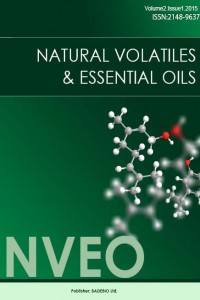Abstract
Eighteen populations of Satureja montana, S. parnassica subsp. hellenica, S. pilosa subsp. pilosa, S. pilosa subsp. origanita and S. thymbra, originated from different localities of Greece, were cultivated at the Laboratory for the Conservation and Evaluation of Native and Floricultural Species (North Greece). After one year of cultivation the plants were analyzed on the basis of their essential oils. The essential oils (EOs) of the aerial parts were obtained by hydrodistillation in a modified Clevenger-type apparatus, and their chemical analyses were performed by  GC and GC-MS. The  essential oil contents showed a  positive response  to cultivation. Oxygenated monoterpenes constitute the main fraction of 15/18 EOs (51.1%-89.6%). Some constituents were found even in different percentages in almost all samples: carvacrol, thymol, p-cymene, γ-terpinene, linalool, borneol, cis-sabinene hydrate, spathulenol and caryophyllene oxide. It is noteworthy that most Satureja species produce high amounts of carvacrol/thymol/p-cymene or linalool or geraniol/geranyl acetate, which are related biosynthetically. The results obtained are an important indication of the potential economic utility of cultivated Satureja spp. as a raw material and source of useful industrial oil compounds
Details
| Primary Language | English |
|---|---|
| Journal Section | Letter to Editor |
| Authors | |
| Publication Date | April 3, 2015 |
| Published in Issue | Year 2015 Volume: 2 Issue: 1 |

